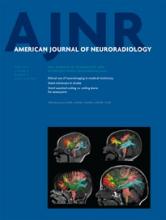Research ArticleNeurointervention
Variable Porosity of the Pipeline Embolization Device in Straight and Curved Vessels: A Guide for Optimal Deployment Strategy
M. Shapiro, E. Raz, T. Becske and P.K. Nelson
American Journal of Neuroradiology April 2014, 35 (4) 727-733; DOI: https://doi.org/10.3174/ajnr.A3742
M. Shapiro
aFrom the Departments of Radiology, Bernard and Irene Schwartz Neurointerventional Radiology Section, (M.S., E.R., T.B., P.K.N.)
cNeurology (M.S., T.B.), New York University Langone Medical Center, New York, New York.
E. Raz
aFrom the Departments of Radiology, Bernard and Irene Schwartz Neurointerventional Radiology Section, (M.S., E.R., T.B., P.K.N.)
T. Becske
aFrom the Departments of Radiology, Bernard and Irene Schwartz Neurointerventional Radiology Section, (M.S., E.R., T.B., P.K.N.)
cNeurology (M.S., T.B.), New York University Langone Medical Center, New York, New York.
P.K. Nelson
aFrom the Departments of Radiology, Bernard and Irene Schwartz Neurointerventional Radiology Section, (M.S., E.R., T.B., P.K.N.)
bNeurosurgery (P.K.N.)

Supplemental Online Figures
Files in this Data Supplement:
- Online Figures (PDF) - see file
In this issue
American Journal of Neuroradiology
Vol. 35, Issue 4
1 Apr 2014
Advertisement
M. Shapiro, E. Raz, T. Becske, P.K. Nelson
Variable Porosity of the Pipeline Embolization Device in Straight and Curved Vessels: A Guide for Optimal Deployment Strategy
American Journal of Neuroradiology Apr 2014, 35 (4) 727-733; DOI: 10.3174/ajnr.A3742
0 Responses
Jump to section
Related Articles
Cited By...
- Subacute Stent Deformities as an Underlying Reason for Vessel Stenosis after Flow Diversion with the p64 Stent: Review and Discussion of Biologic Mechanisms and Consequences
- Flow-diverting stents for the treatment of unruptured distal anterior cerebral artery aneurysms: analysis of the CRETA Registry
- Braids and beyond: a comprehensive study on pipeline device braid stability from PREMIER data
- Comprehensive Analysis of Post-Pipeline Endothelialization and Remodeling
- Intraluminal Flow Diverter Design Primer for Neurointerventionalists
- In vitro flow diversion effect of the ReSolv stent with the shelf technique in a bifurcation aneurysm model
- Pipeline Embolization Device for intracranial aneurysms presenting with mass effect: a large Chinese cohort
- Correlation of Flow Diverter Malapposition at the Aneurysm Neck with Incomplete Aneurysm Occlusion in Patients with Small Intracranial Aneurysms: A Single-Center Experience
- Pipeline Embolization Device for intracranial aneurysms presenting with mass effect: a large Chinese cohort
- In vitro flow diversion effect of the ReSolv stent with the shelf technique in a bifurcation aneurysm model
- Predicting flow diverter sizing using the AneuGuideTM software: a validation study
- Diversion-p64: results from an international, prospective, multicenter, single-arm post-market study to assess the safety and effectiveness of the p64 flow modulation device
- The utility of platelet inhibition testing in patients undergoing Pipeline embolization of intracranial aneurysms
- Parent Artery Straightening after Flow-Diverter Stenting Improves the Odds of Aneurysm Occlusion
- Propensity Score Analysis of Flow Diverters Placed in Scaffolding Stents
- Implementation of computer simulation to assess flow diversion treatment outcomes: systematic review and meta-analysis
- Distal anterior cerebral artery aneurysms treated with flow diversion: experience of a large-volume center and systematic review of the literature
- Flow modification on the internal carotid artery bifurcation region and A1 segment after M1-internal carotid artery flow diverter deployment
- Virtual simulation with Sim&Size software for Pipeline Flex Embolization: evaluation of the technical and clinical impact
- Pipeline embolization device diameter is an important factor determining the efficacy of flow diversion treatment of small intracranial saccular aneurysms
- Endosaccular flow disruption: where are we now?
- Delayed parent artery occlusions following use of SILK flow diverters for treatment of intracranial aneurysms
- On Flow Diversion: The Changing Landscape of Intracerebral Aneurysm Management
- Comparison of Pipeline Embolization Device Sizing Based on Conventional 2D Measurements and Virtual Simulation Using the Sim&Size Software: An Agreement Study
- High-Definition Zoom Mode, a High-Resolution X-Ray Microscope for Neurointerventional Treatment Procedures: A Blinded-Rater Clinical-Utility Study
- Pipeline Diameter Significantly Impacts the Long-Term Fate of Jailed Side Branches during Treatment of Intracranial Aneurysms
- Toward Better Understanding of Flow Diversion in Bifurcation Aneurysms
- Treatment of Distal Anterior Cerebral Artery Aneurysms with Flow-Diverter Stents: A Single-Center Experience
- A comparison between the new Low-profile Visualized Intraluminal Support (LVIS Blue) stent and the Flow Redirection Endoluminal Device (FRED) in bench-top and cadaver studies
- Selection of helical braided flow diverter stents based on hemodynamic performance and mechanical properties
- Large Basilar Apex Aneurysms Treated with Flow-Diverter Stents
- Compacting a Single Flow Diverter versus Overlapping Flow Diverters for Intracranial Aneurysms: A Computational Study
- Endovascular treatment of intracranial aneurysms using the Pipeline Flex embolization device: a case series of 30 consecutive patients
- Posterior Inferior Cerebellar Artery Patency after Flow-Diverting Stent Treatment
- New Pipeline Flex device: initial experience and technical nuances
- Pipeline endovascular device for the treatment of intracranial aneurysms at the level of the circle of Willis and beyond: multicenter experience
- Preliminary experience with the Pipeline Flex Embolization Device: technical note
- Flow diverters: inter and intra-rater reliability of porosity and pore density measurements
- Urgent off-label use of the pipeline flow diverter stent in selected ischemic cerebrovascular conditions: thrombotic segments and tortuous arteries
- Endoluminal Reconstruction for Nonsaccular Aneurysms of the Proximal Posterior Cerebral Artery with the Pipeline Embolization Device
- Anterior Choroidal Artery Patency and Clinical Follow-Up after Coverage with the Pipeline Embolization Device
- The Success of Flow Diversion in Large and Giant Sidewall Aneurysms May Depend on the Size of the Defect in the Parent Artery
- Modifying Flow in the ICA Bifurcation: Pipeline Deployment from the Supraclinoid ICA Extending into the M1 Segment--Clinical and Anatomic Results
- Building Multidevice Pipeline Constructs of Favorable Metal Coverage: A Practical Guide
This article has not yet been cited by articles in journals that are participating in Crossref Cited-by Linking.
More in this TOC Section
Similar Articles
Advertisement











